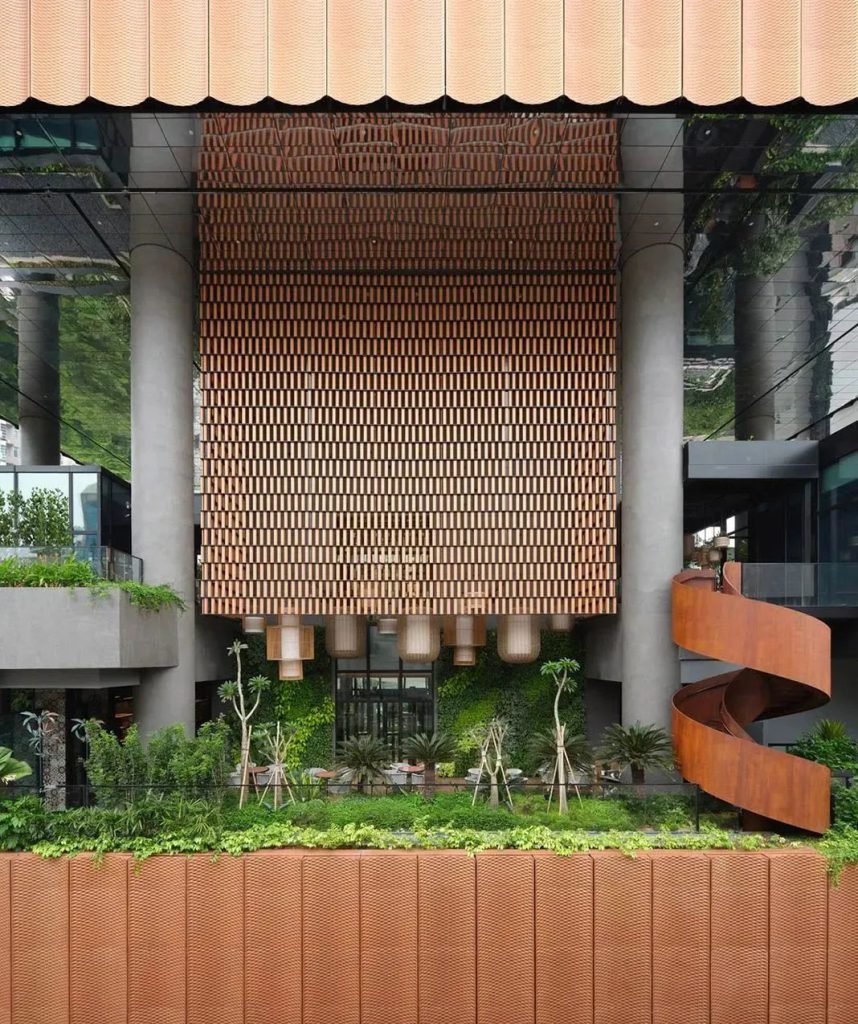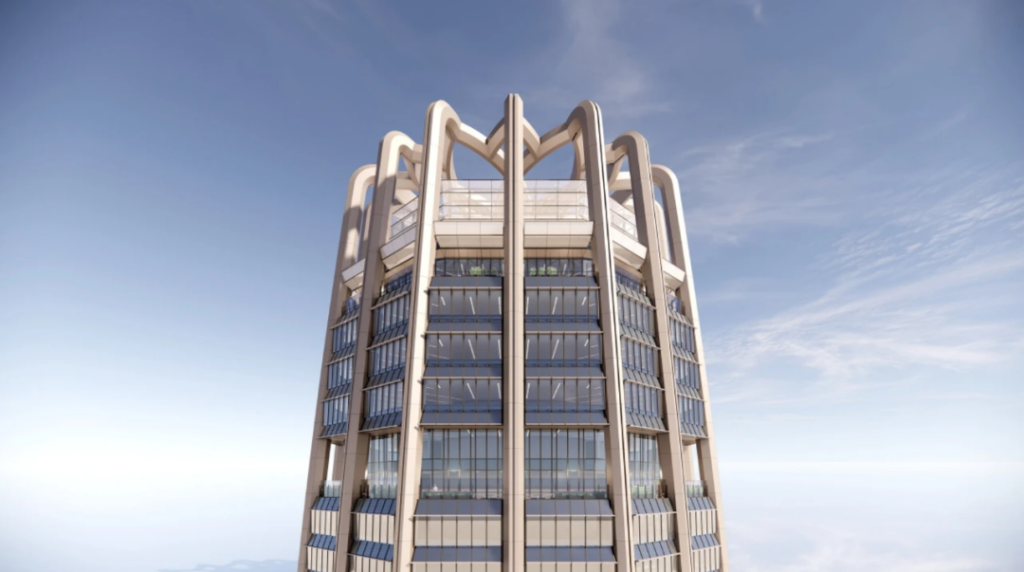现代的医院建筑必须有效的为市民服务,同时应该降低其给人们带来的抑郁性。建筑师认为如今的医院应该充满友好,具备高效,同时让人安静。医院有三个模块:医务,门诊,治疗,他们需要满足功能与交通的清晰性,灵活性,以及容纳性。
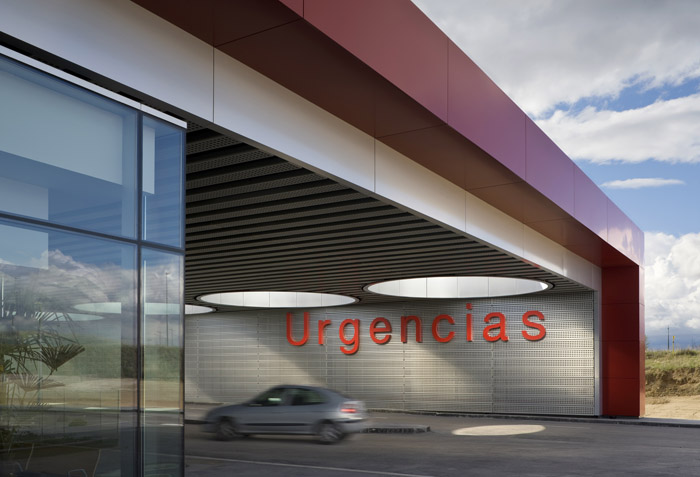
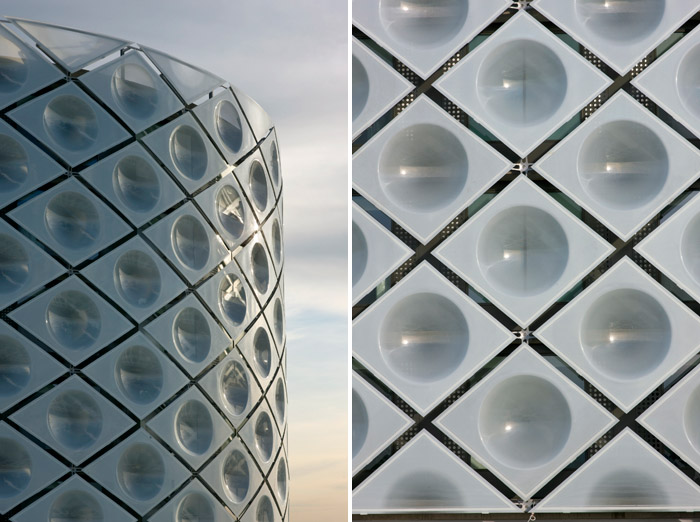
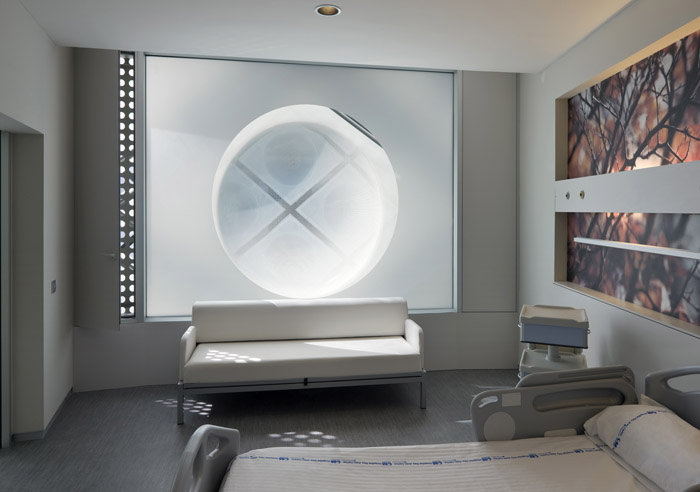
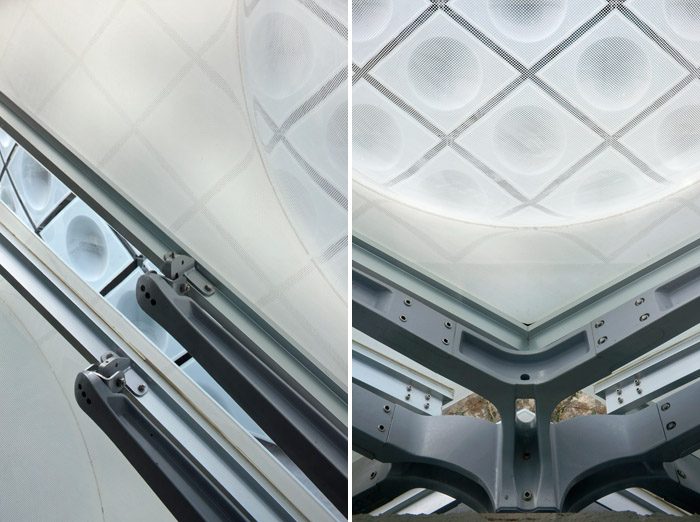
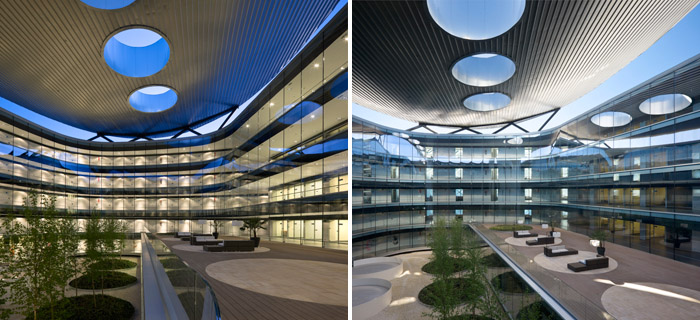
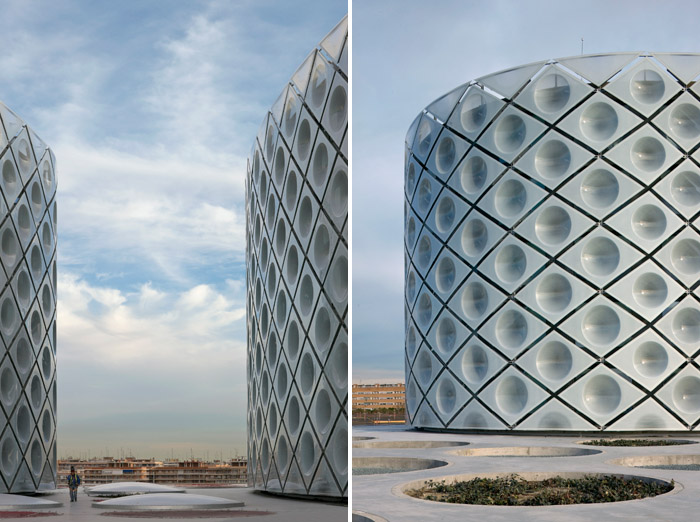
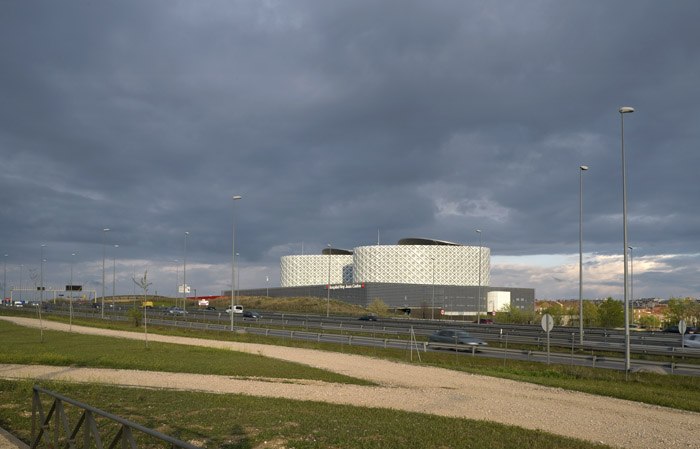
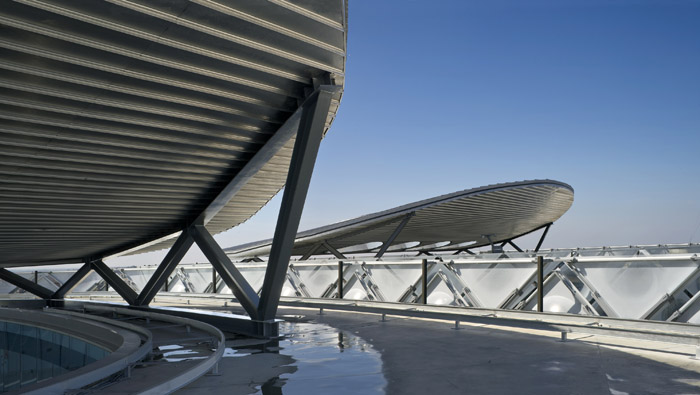
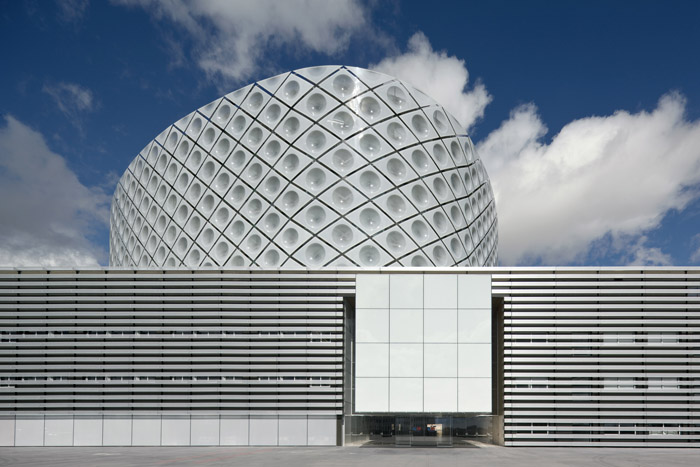
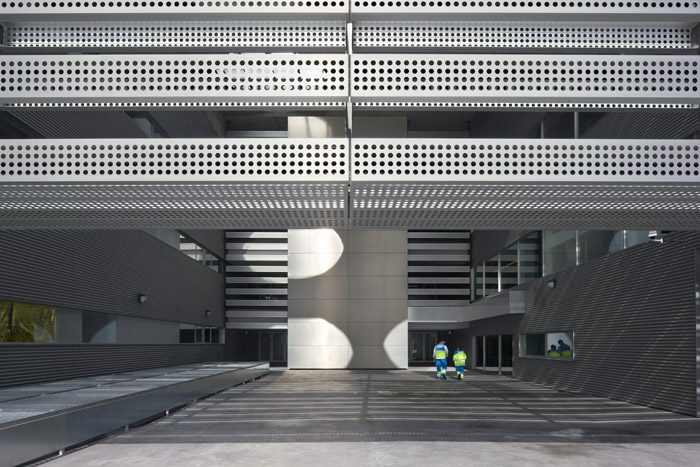
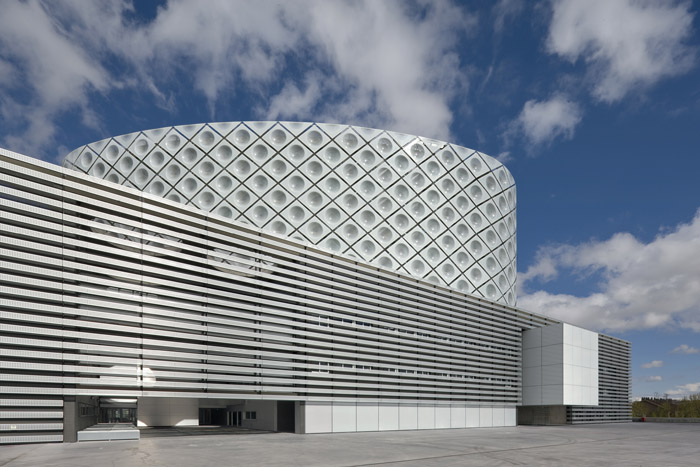
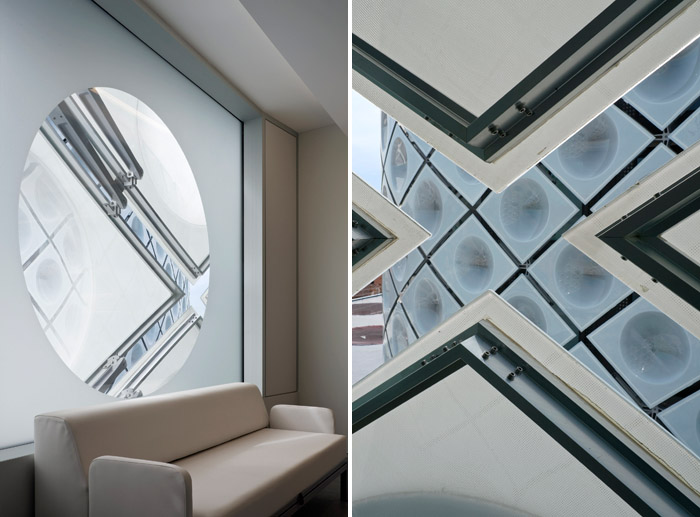

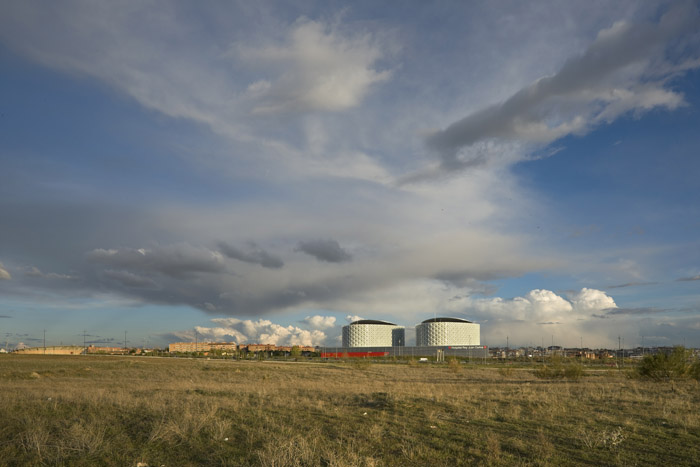
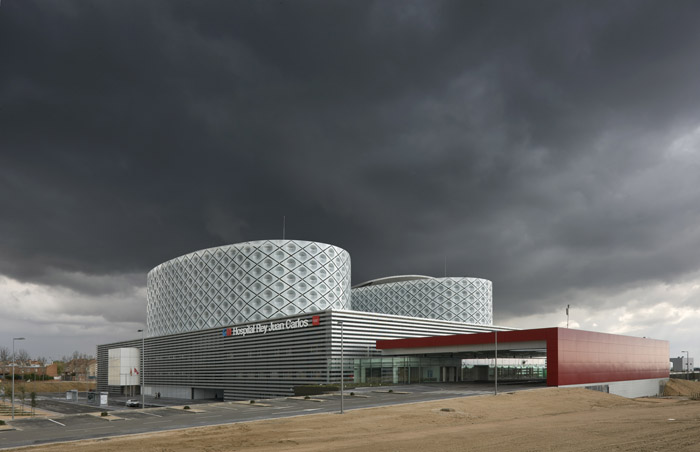
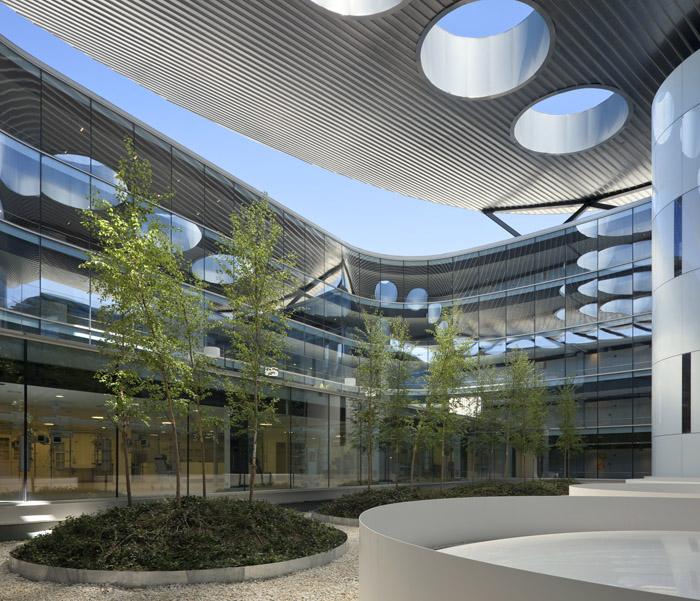
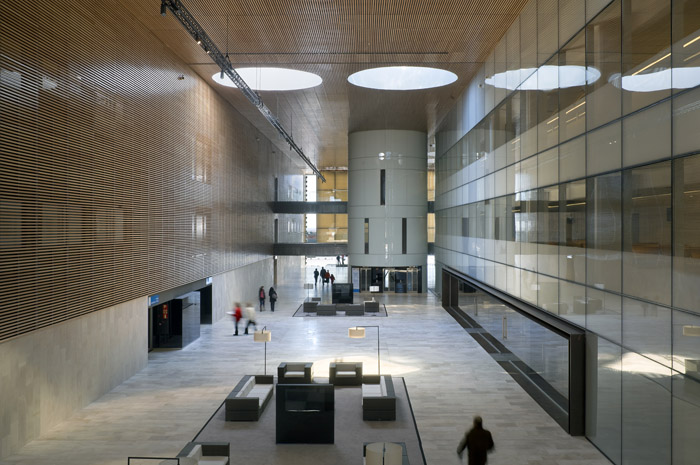
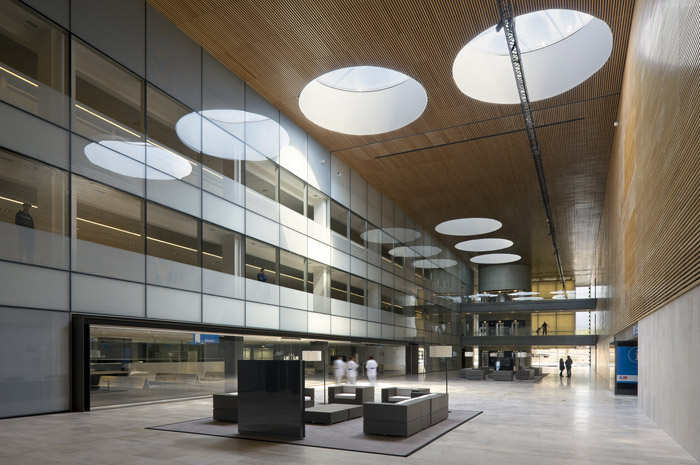
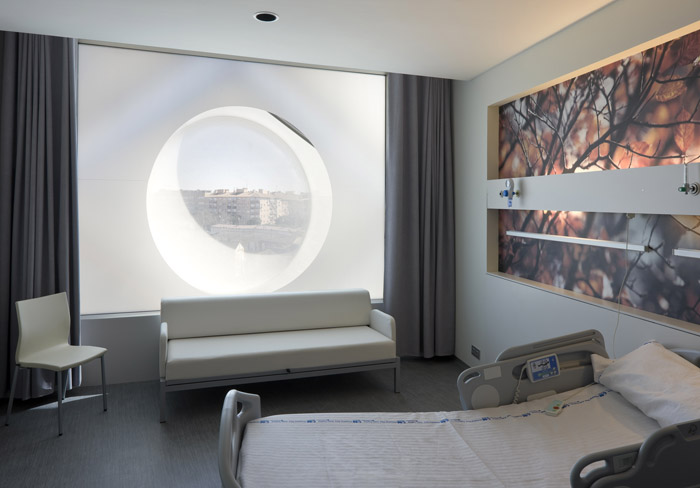
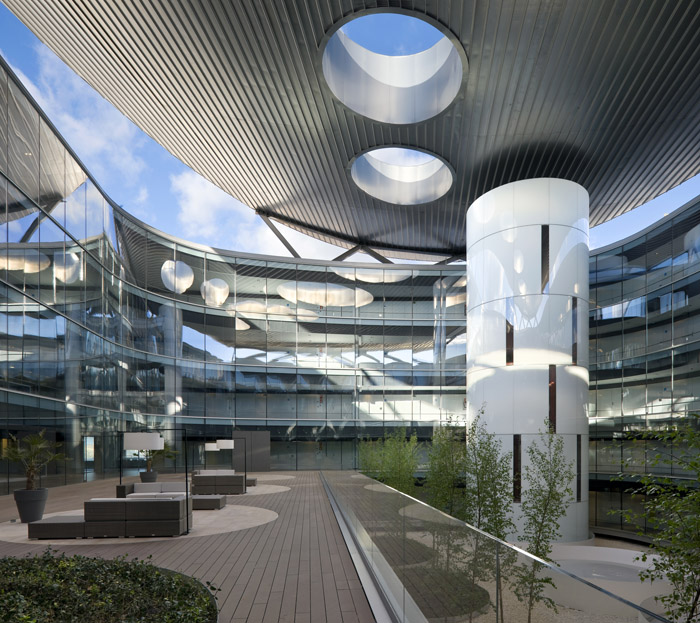
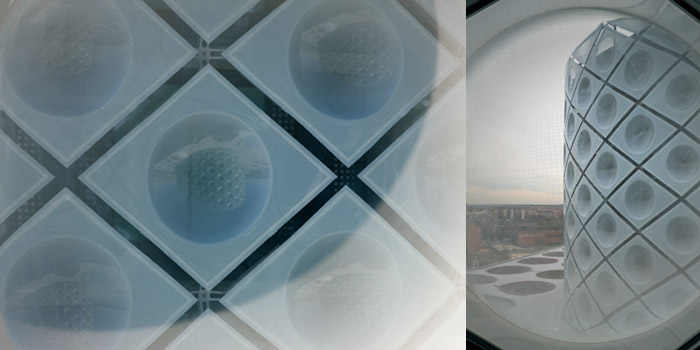
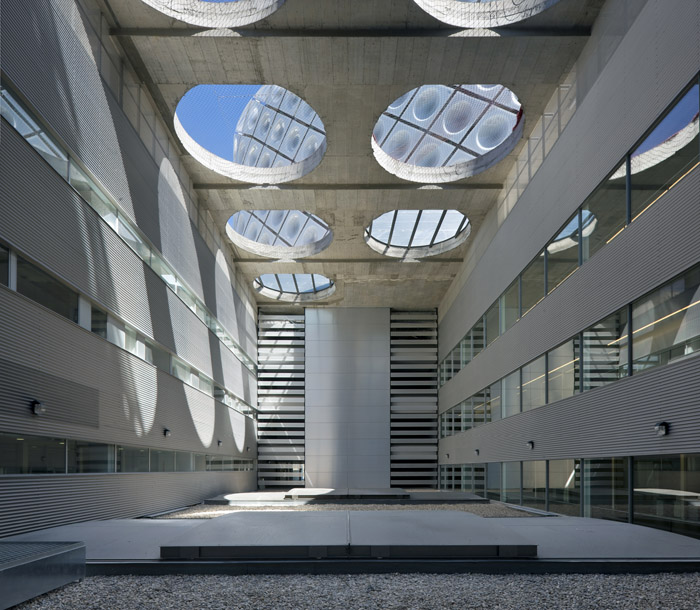
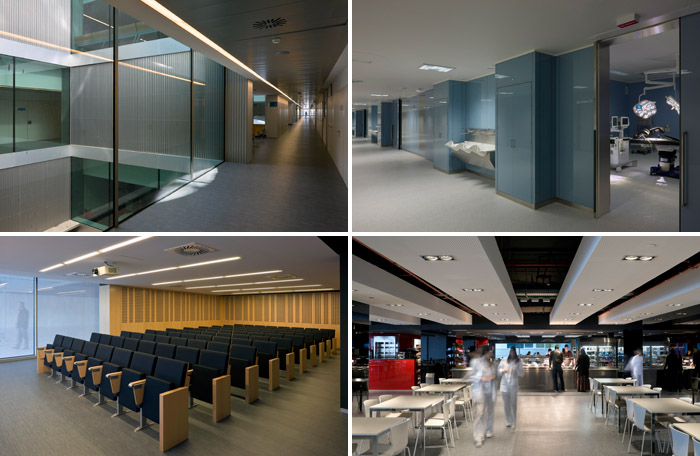
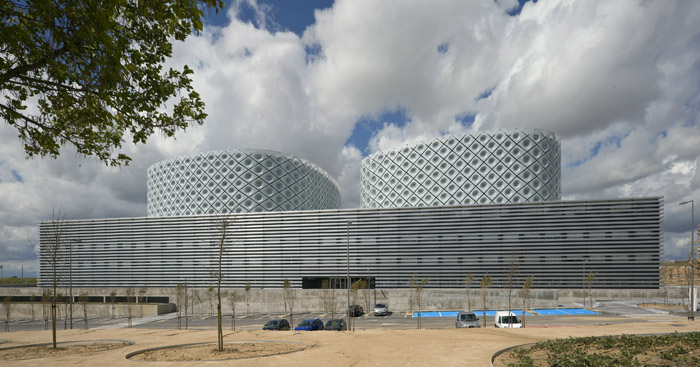
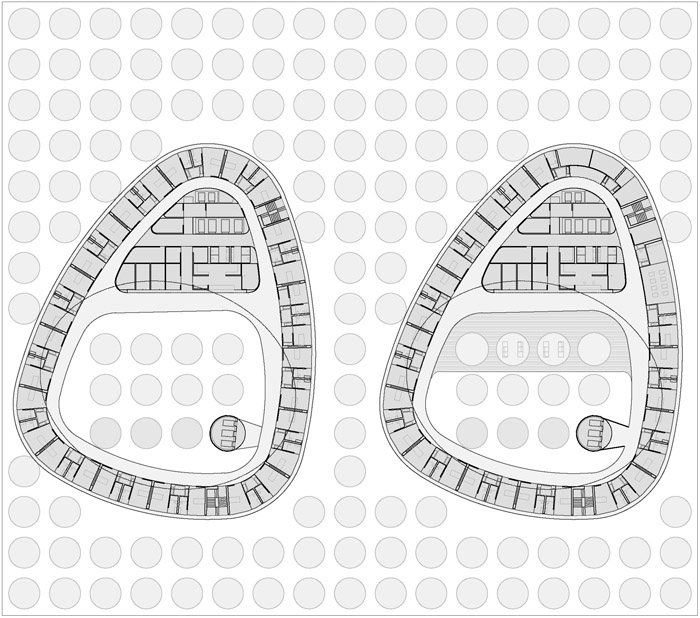
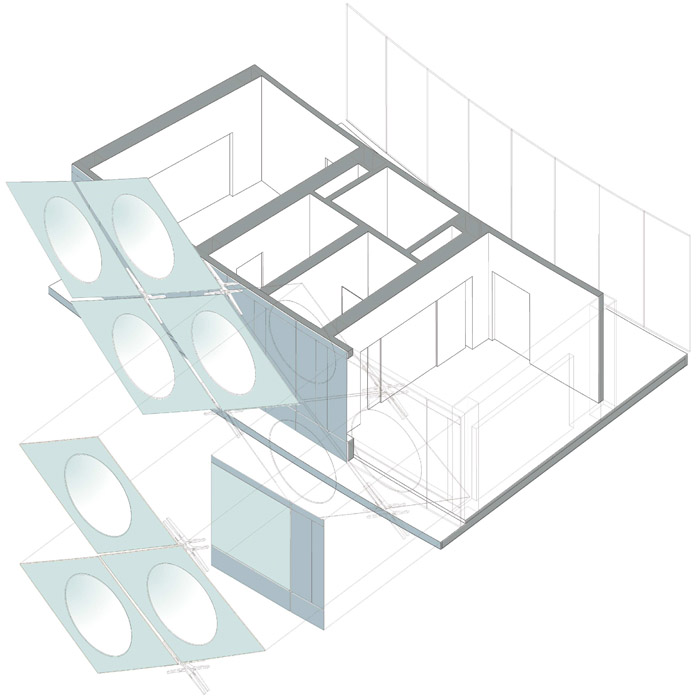
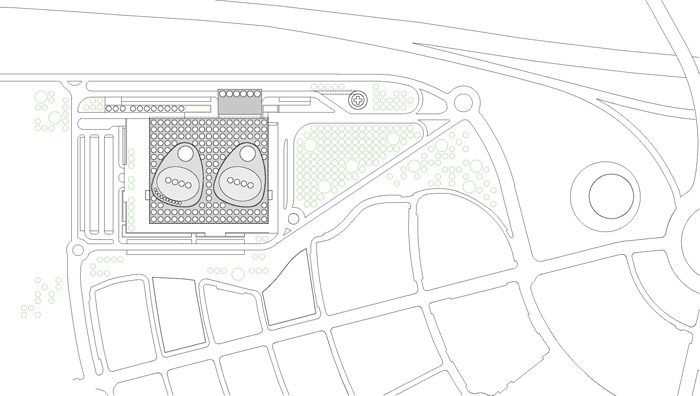
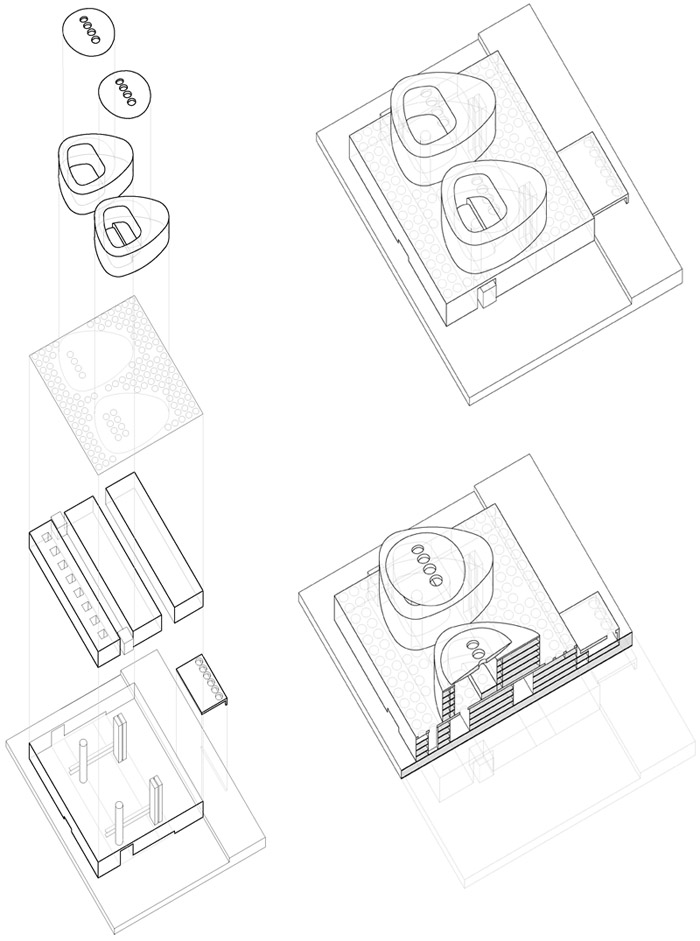
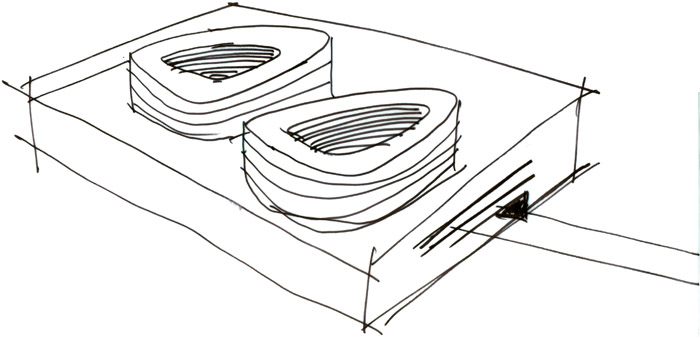
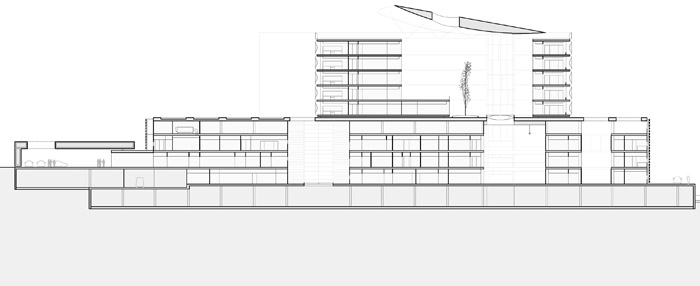 这个医院的住院部被安置在两个柔和的椭圆中,这消除了一般建筑呆板的体块印象,同时具有有效的向心式交通。椭圆塔楼连同裙房形成一个新类型的医疗建筑,人们在这里接受治疗的同时享受着自然光和安静。
这个医院的住院部被安置在两个柔和的椭圆中,这消除了一般建筑呆板的体块印象,同时具有有效的向心式交通。椭圆塔楼连同裙房形成一个新类型的医疗建筑,人们在这里接受治疗的同时享受着自然光和安静。
建筑设计满足了复杂的功能要求,并没有超过预期造价。此外建筑师致力于建筑中人性化部分,为空间引入阳光并让公共空间具备多角度可观性,多方协调,实现真正的治疗型空间。
住院部的病人房间的视线多种多样,裙房上空的屋顶被绿化,也是为了从病人房间眺望出去的景观价值更高。同各个功能区之间的交通具备最大的灵活性和应变性。建筑的设计要点之一是可持续性发展,综合考虑城市环境中太阳,地形灯各项条件,使用绿色环保材料和系统,实现屋顶绿化,为建筑引入自然通风和采光,降低建筑的建造和运营成本。
“REY JUAN CARLOS” HOSPITAL, MOSTOLES (MADRID). SPAIN.
Location:
Gladiolo st. s/n 28933 Móstoles I Madrid. SPAIN.
Type I Health Architecture
Ground Surface I 90.000 sqm
Built Area overground I 69.782sqm
Built Area underground I 24.923,20 sqm
Built Total Area I 94.705,49 sqm
Architect:
Rafael de La-Hoz Castanys
Member team:
Design Architects I Hugo Berenguer / Francisco Arévalo / Miguel Maíza / Jacobo
Ordás / Carolina Fernández / Encarna Sánchez / Gonzalo Robles / Javier Gómez /
Ignacio Jaso
Basic Project I Miguel Miguel Maíza / Jacobo Ordás / Gonzalo Robles / Javier
Gómez
Execution Project I Miguel Maíza / Sigfried Burguer / Hugo Berenguer / Jacobo
Ordás / Gonzalo Robles / Javier Gómez / Peter Germann / Laura Díaz / Fernando
de la Fuente / Saúl Castellanos / Carmen Salinas / Ignacio Jaso
Work Coordination I Miguel Maíza / Jacobo Ordás.
Computer Graphics Design I Luis Mu?oz / Daniel Roris.
Models I Victor Coronel / Fernando Mont.
Photos I Duccio Malagamba / Aitor Ortiz
Suppliers
Fachada | Fa?ade: Permasteelisa, Cricursa, FERGA, Doval Building
Vidrio | Glass: Control Glass (Unión Vidriera Grupo)
Suelos | Flooring: Armstrong DLW Ibèrica S.A, Tarkett Floors, S.L.
Carpintería | Carpentry: Móstoles Carpintería, Moinsa
Cerámicas | Ceramics: Porcelanosa, Discesur S.A.
Iluminación | Lighting: Lamp
Mobiliario | Furniture: Actiú, Grupo MobiliarPhotographer: Duccio Malagamba
PROJECT SUMMARY.
Our recent hospitals, as health systems, effectively serve the citizens, but it takes place in a dramatic architectural space unnecessarily and sometimes depressive. Its proven effectiveness is the cause of their repeatability, so that over a quarter of a century that all are the same, or so perceived
We propose to transform the citizen into a customer, for a new type of hospital, which in addition to assist with the proven effectiveness of our healthcare system, can feel at all times the center of all care, giving them all attention.
This new hospital model is configured in three basic elements: efficiency, light and silence. The best about hospital architecture and the best in residential architecture.
Conceptually, the new hospital is arranged on base that gives structure to the
health care units, outpatient diagnosis and treatment. Structured in three
modules or parallel buildings that reflect the best hospital main structures:
flexibility, expansion, functional clarity and horizontal circulations.
On this structure are arranged two units of hospitalization, two oval crown with gentle curves drawn give a different view from the depressive sensory residential forms of the rationalist “block bar”, and draw on the best of recent residential architecture: the elimination of corridors and in consequence the elimination of annoying noise, concentric circulation, light and silence around a common atrium.
Two functional concepts space: base and crown, which are linked to form a new architecture, a model that offers to the professionals the opportunity to treat and to the citizens to be treated in an environment where the natural light and the silence resulting therapeutics.
Criteria 1: Overall Concept.
The overall concept is based on the architectural proposal for a hospital of this nature; it should allow adaptation to the requirements of the program needs, and expected financial requirements.
It has also sought to respond to the complex functional program with contemporary and attractive architecture. It has had particular regard to the human scale, solar protection and above all to distinct the patients spaces through the hospital.
The build is the result of a different point of view against to the simples and common spaces in hospital architecture.
Our purpose is also give therapeutics spaces, provide and architecture that serves to he rest and recovery of the patient. “To use the architecture as a medical treatment”
Criteria 2: Design approach.
The design is structured on a large base, which encompasses various medical areas of the hospital, holding two volumes of glass where the ward is developed. This approach develops to a complex system of articulated spaces within three prisms that make up the base, geared to each other as if it were a machine, a “healing machine”.
In addition to the functional treatment of the base, a symbolic treatment was essential to remark the towers. The space of the patients is planned only thinking in the needs and in the best way to them to feel better with harmony
and light.From the first moment, it was determinate to have different spaces between the area of the patients and the other functional areas of the hospital, allowing in this area the relation between the green roof garden and the views from each room.
Criteria 3: Funtionality
Achieving a perfect functional relationship between the areas, providing maximum flexibility to the scheme between the exterior and interior spaces. Differentiate between internal and external circulation, distinguish the accesses and the specificity of vertical communication cores, allowing clarifying the scheme.
The position of the two towers, responds to the functional need to have an immediate access to the operating rooms, delivery rooms, emergency and diagnostic.The functionality of the building lays in the way of life the patients and their relatives have during the time they have to be inside.
Criteria 4: Implementation
The strategy of the implementation is the organization between all the elements that are involved in the project. The three prisms of the basement organize the circulation in an exemplary manner.
In the two prisms of the edges are arranged for one to be used externally and the other internally, the block in the middle shares uses when internal and external circulations are necessary, but always without interference.
Systematize the building by structural modulation with the subsequent pre-industrialization process linked with a technological innovation in the materials and systems used; give a unique result with the last technology making the difference with the traditional hospital buildings.
Criteria 5: Sustainability
One of our main points in the building is the sustainability; considering the conditions of solar orientation,topography, built environment and the greenery nearby, without forgetting the urban conditions of application.Incorporate in the system green materials and renewable energy technology, with the objective to save resources and optimize operating costs, providing trough the green roof the natural light and ventilation to the inside of the building.
